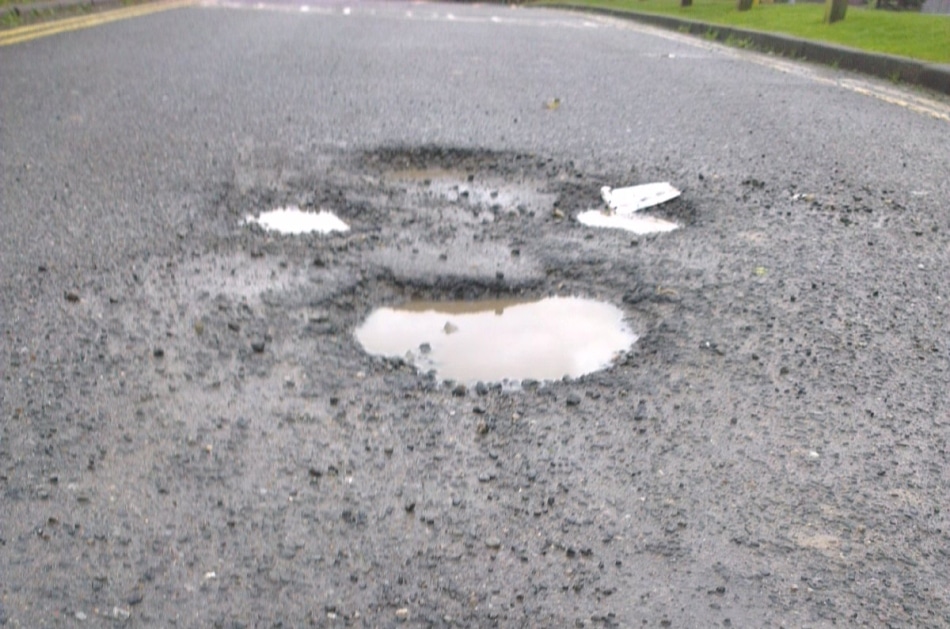Apr 10 2019
According to researchers at Drexel University, microscopic bacteria may soon help in preventing the deterioration of roads in the winter season. The team is exploring new methods to make the infrastructure much more resilient.
 Road salts damage concrete by deteriorating its structural integrity and forming a chemical, called CAOXY, that causes cracks to form and uses them to wedge it apart. (Image credit: Drexel University)
Road salts damage concrete by deteriorating its structural integrity and forming a chemical, called CAOXY, that causes cracks to form and uses them to wedge it apart. (Image credit: Drexel University)
Chemicals such as calcium chloride, often known as “road salts,” are used for preventing the formation of ice and the accumulation of snow that can result in unsafe travel conditions. However, these chemicals are also responsible for causing potholes and the deterioration of road surfaces.
Such degradations occur when the chemicals react with the water present in snow and ice and also with concrete to create an expansive compound that can deteriorate concrete by creating internal distresses and expansions. Known as calcium oxychloride, or CAOXY for short, the deleterious compound can also chip off pieces of concrete as it penetrates the surface of the road prior to thawing and freezing.
Now a research team, including Yaghoob Farnam, PhD, Caroline Schauer, PhD, and Christopher Sales, PhD, from Drexel’s College of Engineering, has demonstrated that the formation of CAOXY can be reduced by mixing a small amount of bacteria into concrete. The results of the study have been recently reported in the journal Construction and Building Materials.
This theory was reached while the researchers were examining a bacterial strain known as Sporosarcina pasteurii. These species of bacteria are quite extraordinary because they have the potential to promote a chemical reaction that produces calcium carbonate, a kind of substance usually known as “nature’s cement.” This trick, referred to as “biomineralization” or microbial induced calcium carbonate precipitation, can be achieved only by a few kinds of bacteria. However, one would be able to view their work in the mineral depositions forming marble and limestone.
In the past 10 years, bacteria like S. pasteurii have been researched as a means to fix cracks in concrete infrastructure and statues, and, of late, as an environmentally sustainable option for producing bricks. However, the Drexel team noted that one of the other talents of the bacteria may also prove quite handy in preventing the formation of those cracks in the first place.
We were actually looking at the end product of a chemical reaction involving these bacteria – calcite—but we came to realize that the way they produce it could be quite useful when it comes to diverting the reaction that turns road salt into a road-deteriorating compound. We knew the bacteria require calcium chloride to produce the calcite, which is a harmless compound. So if we could work out a way to have the bacteria present when the calcium chloride road salt hits the concrete it could interact with the bacteria and curtail the reaction that causes road degradation.
Yaghoob Farnam, PhD and Assistant Professor, College of Engineering, Drexel University
In order to test their theory, Farnam and Sales produced a series of concrete samples using a kind of cement that is often utilized in roads and subsequently added a mixture of S. pasteurii as well as the nutrients they require to endure some of the samples. Then, after 28 days of exposure to a calcium chloride solution—replicating one month of road treatment in the winter—the team carried out a range of tests on the samples to determine the amount of CAOXY present and also to establish the structural integrity of samples.
Looking at the development of micropores as well as the acoustic vibrations in the mortar sample, which provide both ways of measuring the sample strength, the investigators discovered that there was almost no deterioration in the concrete prepared with the bacteria mixture, following exposure to the calcium chloride.
Besides that, the levels of CAOXY were considerably lower in the samples laden with bacteria; this was due to the precipitation of calcium carbonate induced by the microbes. Moreover, the presence of calcium carbonate indicates that the bacteria’s interaction can possibly be used to strengthen the surface of the road, albeit this kind of application would need more studies, stated the researchers.
The bacteria are capable of changing the microenvironment around them. Specifically, they create a high pH environment by converting the chemicals in the nutrient slurry into a weak base, ammonia. This environment promotes the precipitation of calcium ions and carbonate ions into calcium carbonate—rather than the formation of CAOXY.
Christopher Sales, PhD, Assistant Professor, College of Engineering, Drexel University
Since the bacteria are non-pathogenic and occur in nature, they can provide an environmentally safe solution to the issue of road deterioration. Farnam and Sales are hoping to take this work to the next level by teaming with both national and local departments of transportation for more testing and development.